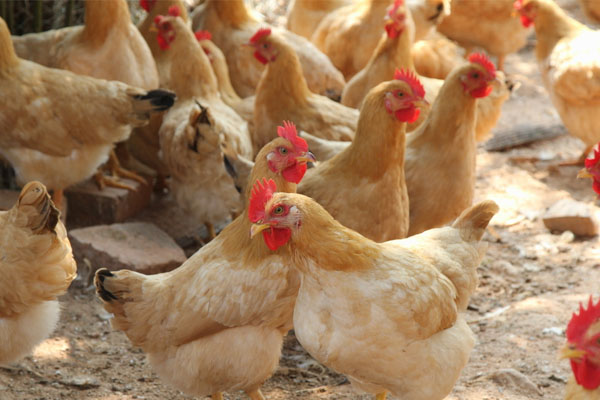In the production of chickens, the cost of raising about 70% of the total expenditure. So, how to improve production performance and reduce feeding costs while other costs are constant?
1. Scientifically formulated diet
According to the nutritional needs of different growth stages of different breeds of chickens, make full use of local cheap feed resources and prepare full-price diets by themselves, which can greatly reduce feed costs. If you purchase a full-price compound feed, you should compare the price of the feed produced by each manufacturer with the test feed, and buy those with high quality and low price.
2. Reduce feed waste
First, the structure of the trough should be reasonable, and the upper edge of the trough should be edged to form a concave shape to prevent splashing of the feed.
Second, the use of the trough should pay attention to the height of the chicken in time, so that the trough is always 2 to 3 cm higher than the chicken back.
The third is to feed less and increase the amount of time. According to tests, feed is added to 2/3 of the trough, feed waste can be up to 12%; added to 1/2, feed is wasted 5%; added to 1/3, feed is wasted 2%. Therefore, the amount of feed should not exceed 1/3 of the trough.
3. Timely elimination of residual, sub- and low-yield chickens
Residual chickens have low production performance and consume a lot of feed, so they should be eliminated in time to reduce the cost of feeding. Low-yield and non-production of laying hens should also be eliminated in time. This kind of chicken has a pale crown and narrow abdomen contraction; some feathers are bright and clean, and the crown is particularly developed. It can catch the anus. If it cannot be turned over, it should be given. Eliminated.
4. Pay attention to disease prevention
It is necessary to strengthen the management of feeding, improve the disease resistance of chickens, and reduce the cost of treatment. At the same time, do a good job in the environment and the hygiene of the feeding equipment, to create a good growth environment for the chicken, to ensure stable production and high yield.
5. Timely broken beak
Generally, the first break is carried out between 7 and 10 days old, and the second time is carried out at 10 to 12 weeks old. The action when breaking the sputum should be clean and clean, and the upper and lower jaws should be cut 1/2 and 1/3 respectively, so as to avoid both feeding and ensuring that the chicken does not feed the feed outside the trough.
In fact, from a long-term perspective, if farmers plan to breed poultry on a large scale, it is best to use chicken battery cages. The current automatic poultry breeding equipment is completely controlled by automation, has the characteristics of convenient operation, high labor production efficiency and high economic efficiency, and is very suitable for large-scale broiler chicken or laying hen culture. The short-term investment is to gain more benefits.
